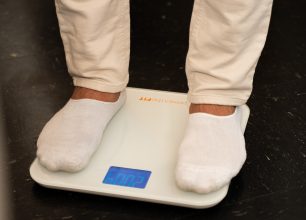The orthopedic digital health landscape is rapidly evolving. Patients and physicians alike are growing to embrace digital solutions for the added convenience, efficiency, and effectiveness they provide. Orthopedic physicians who are interested in but not currently using digital health tools can gain confidence and understanding of their benefits in the following article.
How popular are digital health technologies?
The latest AMA Digital Health Research report found that physicians across all specialties are adopting digital health solutions at higher rates than ever. Physicians are now using an average of nearly 4 digital tools in their practice, up from 2.4 in 2019.
Virtual visits are the most popular digital health tool. Currently, 92% of physicians use this technology to provide remote care to their patients. Remote monitoring for efficiency, which includes “smart” clinical devices such as thermometers and scales, is used by 36% of physicians. Remote monitoring for improved care, which includes technologies that continuously measure vital signs for chronic disease patients, is currently used by 34% of physicians.
The use of these three technologies has seen the most significant growth since 2019:
- Virtual visits tripled in use.
- Remote monitoring for efficiency nearly doubled in use.
- Remote monitoring for improved care grew 12%.
According to the report, physicians are most enthusiastic about these technologies because of their effectiveness at improving health outcomes, work efficiency, and diagnostic ability. For example, remote patient monitoring allows providers to manage patients’ conditions beyond their scheduled appointments. Care teams can identify and diagnose symptoms much sooner and provide treatment before they progress.
To learn more about the benefits specific to remote monitoring for orthopedics, you can access a free download of Prescribe FIT’s most recent white paper, Remote Patient Monitoring Technology: Decoding the Benefits of RPM & RTM Services for Orthopedic Practices.
How can orthopedic physicians implement these tools in their practice?
Virtual visits and remote monitoring are the fastest-growing type of digital health tools. For orthopedics in particular, they can deliver several valuable benefits. For example, a 2020 review of telemedicine tools for orthopedics found that they are a cost-effective way to expand care and improve patient-reported outcomes.
As such, many orthopedic physicians are interested in getting started but are unsure where to begin. How can physicians take the first steps towards implementing these solutions in their practice?
For starters, it’s important to know what your desired goals and outcomes are. Whether it’s to improve the patient experience and health outcomes, or increase the productivity of your staff, having the right goals in mind will inform what tools or program you choose to implement.
You may have the goal to improve the patient experience by offering more connected care outside the clinic. In that case, a remote monitoring solution can help you achieve this and much more. We discuss this option in more detail below.
In orthopedics, as many as 55% of patients at any given practice may be overweight or obese. One goal you may have in mind is to help your patients reduce their weight to improve treatment outcomes. In this case, a valuable digital health tool may be a remote monitoring device such as a smart scale that collects and transmits data on patients’ weight.
While a smart scale may provide valuable information regarding weight, it doesn’t necessarily help the patient lose weight. To achieve that end, the practice can explore other options such as virtual health coaching, software platforms, and mobile applications that provide weight loss education and goal tracking.
Full-service remote monitoring for orthopedics
Oftentimes, all of these technologies are offered in a single solution: a full-service remote monitoring program. These programs allow practices to utilize digital care technology by partnering with a remote monitoring company. The company provides the (HIPAA compliant) devices, software, and support staff required to maintain the program. Meanwhile, the physician uses the resulting data to inform health care decisions.
Full-service remote monitoring can be a cost-effective option for small practices that lack the resources to maintain a self-managed program. Oftentimes, the technology provided by a full-service program is billable to insurance. This allows the practice to create an additional revenue stream.
Lastly, full-service remote monitoring can be a good choice for practices who have less experience managing digital health solutions. Trustworthy and reputable remote monitoring companies can offer tech, billing, and patient support, allowing the physician to focus on optimizing treatment and health outcomes for their patients.
The orthopedic digital health landscape is ever-evolving with new technologies designed to improve efficiency as well as patient outcomes. Orthopedic physicians can take a proactive approach towards their patients’ health by adopting these solutions.
Prescribe FIT is a full-service remote monitoring and virtual lifestyle health solution that extends orthopedic care beyond the office to address the root cause of orthopedic patients’ musculoskeletal (MSK) conditions. Our comprehensive solution helps patients decrease weight, reduce pain, and improve mobility through simple changes to nutrition, physical activity, and lifestyle.
Published on December 19, 2022

